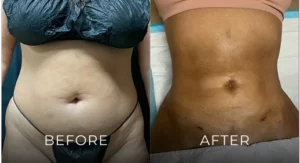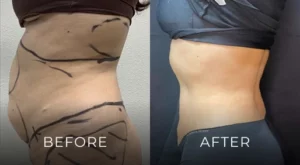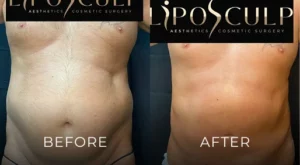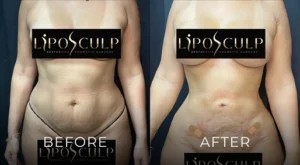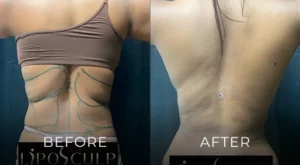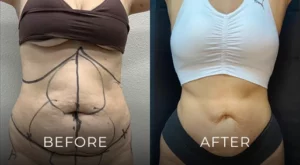Is Liposuction Painful?
Liposuction has become one of the most common cosmetic procedures for reshaping the body and removing stubborn fat that doesn’t respond to diet or exercise. But before deciding to undergo treatment, many people ask the same question: Is liposuction painful?

Understanding the Liposuction Procedure
The liposuction procedure involves removing unwanted fat deposits from areas such as the abdomen, thighs, arms, hips, or neck. The surgeon makes small incisions in the skin and inserts a thin tube called a cannula, which is used to break up and suction out fat cells.
Several techniques are available today:
- Traditional tumescent liposuction
- Power-assisted liposuction
- Ultrasound-assisted liposuction
- Laser-assisted liposuction
Local Anesthesia vs. General Anesthesia
What Determines How Much Fat Can Be Removed
A frequently asked question is how much fat can be safely removed during liposuction. The answer depends on individual factors such as body type, health status, and the surgeon’s recommendations.
Typically, surgeons remove up to five liters of total aspirate in a single session. However, this amount can vary. Removing too much fat at once can increase liposuction risks and affect the body’s ability to heal properly. The goal of liposuction is not drastic weight loss, but rather body contouring – refining shape and proportion while maintaining natural-looking results.
The amount of fat removed also influences how the body feels during recovery. Patients who undergo larger-volume liposuction might experience more swelling and soreness initially compared to those with smaller procedures.
What to Expect After Liposuction Surgery
After liposuction surgery, mild to moderate soreness is common. Most patients describe it as a combination of tenderness, swelling, and tightness rather than sharp pain. The discomfort peaks during the first few days and then gradually subsides as the healing process continues.
Your surgeon may prescribe pain medication or recommend over-the-counter options to manage discomfort. Wearing compression garments helps reduce swelling and provides support as the body adjusts to its new contours. Patients should also follow post-operative care instructions closely to promote smooth healing and reduce complications.
While recovery experiences differ from person to person, most people can resume light activities within a few days and return to work after about a week, depending on the procedure’s extent.
How the Healing Process Works
The healing process after liposuction occurs in stages. During the first few days, the treated area may appear swollen or bruised. These effects are part of the body’s natural response to surgery. Over the following weeks, swelling gradually decreases, and the skin begins to tighten around the new contours.
Patients often notice visible improvements after two to three weeks, with the final results typically developing over several months. Staying hydrated, eating nutritious foods, and avoiding smoking can help speed recovery and improve skin elasticity.
Some individuals may notice mild numbness or firmness in the treated areas for a few weeks. These sensations typically fade as nerves heal and swelling subsides.
Managing Pain Levels and Discomfort
Pain levels after liposuction vary depending on the technique used, the size of the treatment area, and personal pain tolerance. Traditional liposuction can cause more post-procedure soreness, whereas advanced methods, such as power-assisted and laser-assisted liposuction, tend to be gentler.
Patients usually describe their pain as mild to moderate. Most return to their daily routines sooner than expected. Gentle walking and movement are encouraged early in recovery to promote circulation and prevent stiffness.
If discomfort persists, patients should communicate with their surgeon, as adjustments in medication or care routines can significantly improve comfort.
Common Liposuction Risks and How to Minimize Them
Every surgery carries some risks, and liposuction is no exception. Liposuction risks may include infection, bleeding, fluid accumulation, irregular contours, or temporary numbness. Choosing an experienced, board-certified surgeon significantly reduces these possibilities.
Following post-surgery instructions is equally important. Wearing compression garments, attending follow-up appointments, and avoiding strenuous activities too soon can help ensure proper healing and reduce complications.
In rare cases, uneven results or excess skin may occur after large-volume fat removal. If this happens, your surgeon may recommend additional treatments, such as skin tightening or body contouring procedures, to refine the outcome.
What to Know About Laser-Assisted Liposuction
Laser-assisted liposuction utilizes laser energy to liquefy fat before its removal. This technique enables smoother fat extraction and may also help stimulate collagen production, resulting in firmer skin. Because it causes less trauma to surrounding tissues, recovery may be slightly quicker, and pain levels can be milder compared to traditional methods.
However, laser-assisted liposuction is not suitable for everyone. It is ideal for small to moderate areas of fat and for patients seeking mild skin tightening in conjunction with fat reduction. Your surgeon can help determine whether this method aligns with your body goals and medical history.
Liposuction Recovery and Long-Term Results
Liposuction recovery depends on the extent of the procedure and the patient’s adherence to care guidelines. Mild swelling and soreness are expected for the first few weeks, but they fade gradually. Most patients can return to exercise within four to six weeks; however, it’s essential to obtain clearance from the surgeon before resuming strenuous activity.
Maintaining a stable weight through a balanced diet and regular physical activity is vital for preserving long-term results. Liposuction permanently removes fat cells, but remaining cells can still enlarge with weight gain. By keeping healthy habits, patients can enjoy their new contours for many years.
Why Choose LipoSculp for Your Liposuction
At LipoSculp, patients experience a more comfortable and efficient body contouring process thanks to power-assisted liposuction technology. Our advanced system uses a vibrating cannula that moves rapidly back and forth, making fat removal smoother and less traumatic to surrounding tissues. The result is less bruising, reduced swelling, and a faster recovery compared to traditional methods.
Our approach focuses on precision, comfort, and natural-looking results. Whether you’re targeting stubborn fat around the abdomen, arms, or thighs, our team ensures a personalized treatment plan and close guidance through every stage of the healing process. With state-of-the-art technology and a commitment to patient care, LipoSculp helps you achieve your desired shape with greater comfort and confidence.
